AMD Radeon Pro W5700 Compute Related Benchmarks
We are going to compare the Radeon Pro W5700 to our growing data set
Geekbench 4
Geekbench 4 measures the compute performance of your GPU using image processing to computer vision to number crunching.
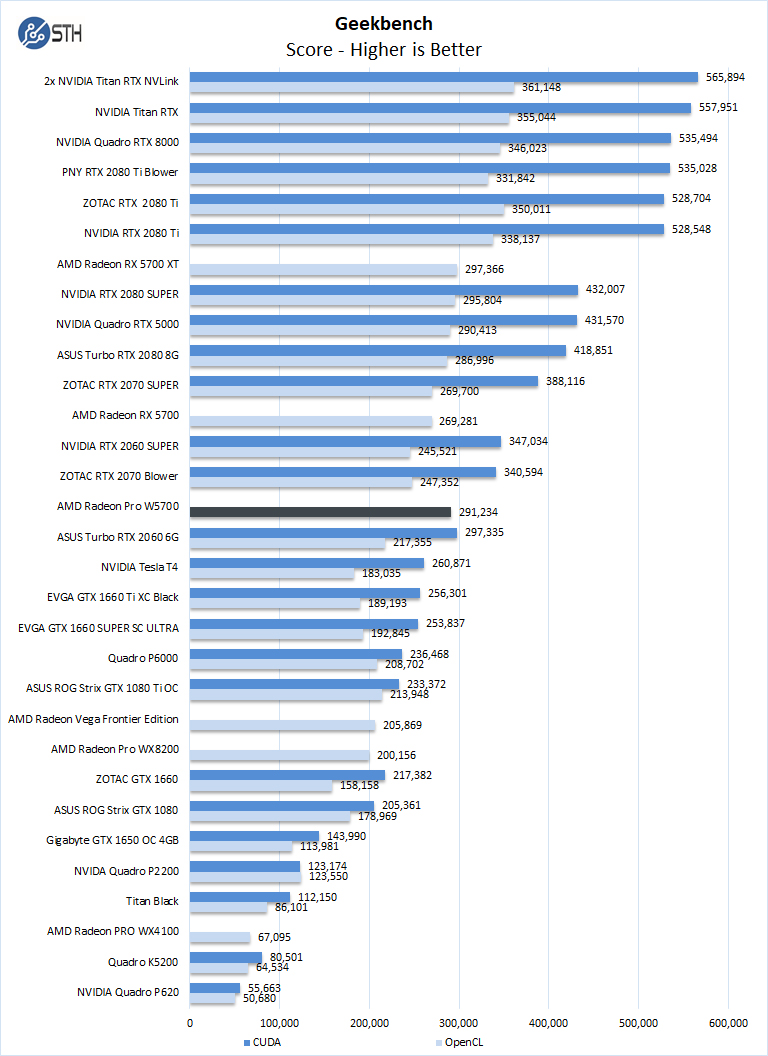
Our first compute benchmark, and we see the Radeon Pro W5700, achieve results close to RTX 2070 Blower, which is also a dual-slot graphics card. A theme, of course, is that we will be running the W5700 in OpenCL since it does not support CUDA applications natively.
LuxMark
LuxMark is an OpenCL benchmark tool based on LuxRender.
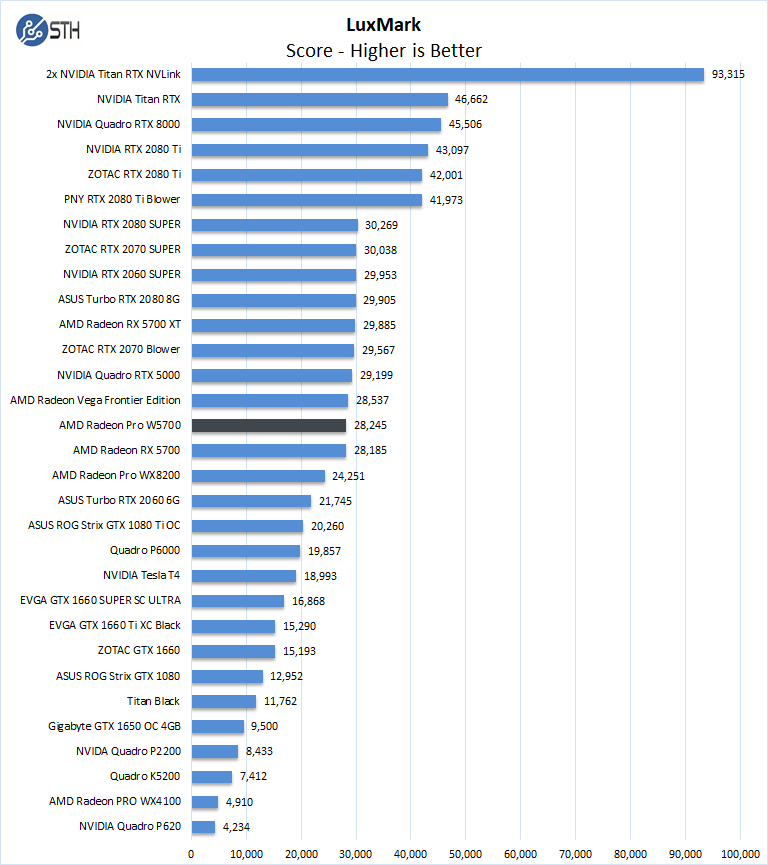
With LuxMark, we generally find the dual-fan cooler GPUs have a performance edge. In the case of the AMD Radeon Pro W5700, we see the single-fan blower type cooler holds up well. We actually get better results than the Radeon Pro WX 8200 here.
AIDA64 GPGPU
These benchmarks are designed to measure GPGPU computing performance via different OpenCL workloads.
- Single-Precision FLOPS: Measures the classic MAD (Multiply-Addition) performance of the GPU, otherwise known as FLOPS (Floating-Point Operations Per Second), with single-precision (32-bit, “float”) floating-point data.
- Double-Precision FLOPS: Measures the classic MAD (Multiply-Addition) performance of the GPU, otherwise known as FLOPS (Floating-Point Operations Per Second), with double-precision (64-bit, “double”) floating-point data.
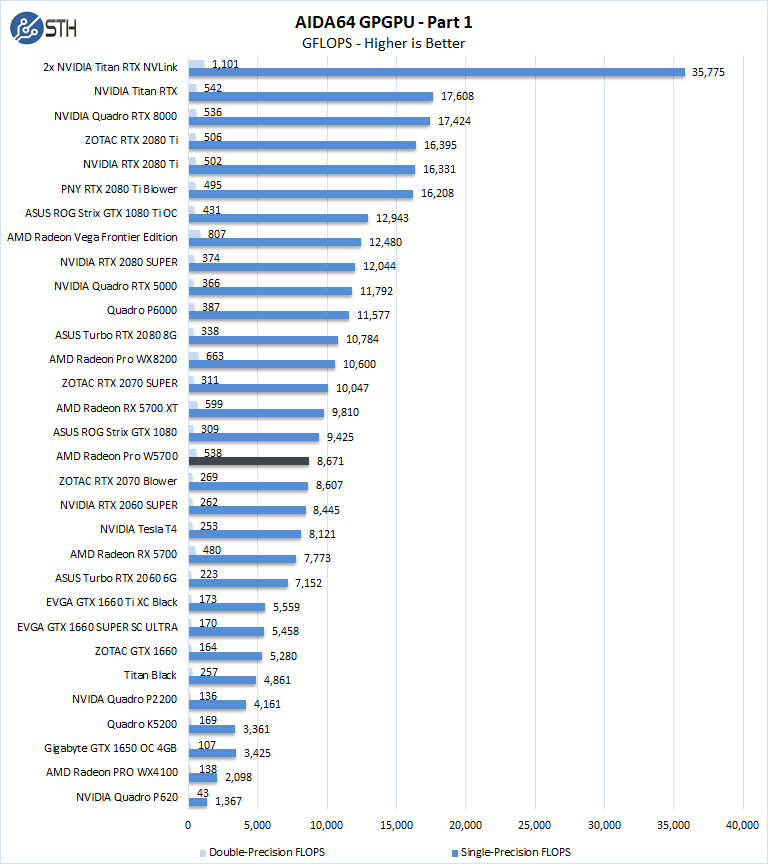
The next set of benchmarks from AIDA64 are:
- 24-bit Integer IOPS: Measures the classic MAD (Multiply-Addition) performance of the GPU, otherwise known as IOPS (Integer Operations Per Second), with 24-bit integer (“int24”) data. This particular data type defined in OpenCL on the basis that many GPUs are capable of executing int24 operations via their floating-point units.
- 32-bit Integer IOPS: Measures the classic MAD (Multiply-Addition) performance of the GPU, otherwise known as IOPS (Integer Operations Per Second), with 32-bit integer (“int”) data.
- 64-bit Integer IOPS: Measures the classic MAD (Multiply-Addition) performance of the GPU, otherwise known as IOPS (Integer Operations Per Second), with 64-bit integer (“long”) data. Most GPUs do not have dedicated execution resources for 64-bit integer operations, so instead, they emulate the 64-bit integer operations via existing 32-bit integer execution units.
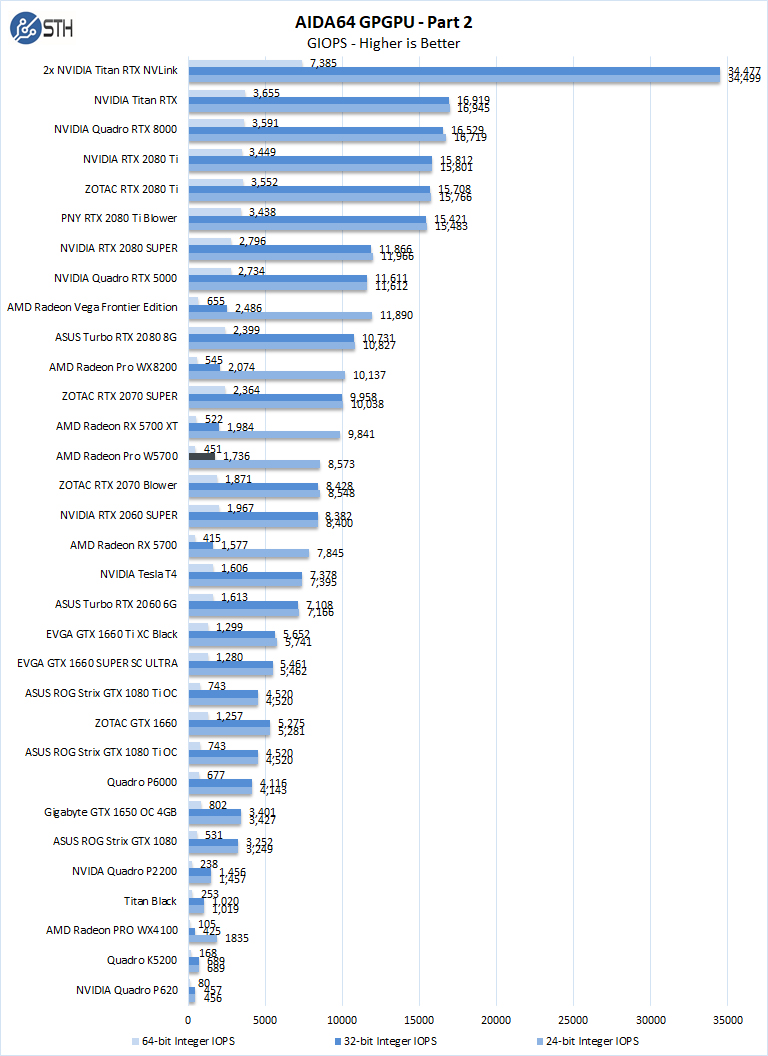
The takeaway here is the Radeon Pro W5700 falls a bit behind the Radeon RX 5700 XT in this test. That is something we did not necessarily expect.
hashcat64
hashcat64 is a password cracking benchmarks that can run an impressive number of different algorithms. We used the windows version and a simple command of hashcat64 -b. Out of these results, we used five results to the graph in our charts. Users who are interested in hashcat can find the download here.
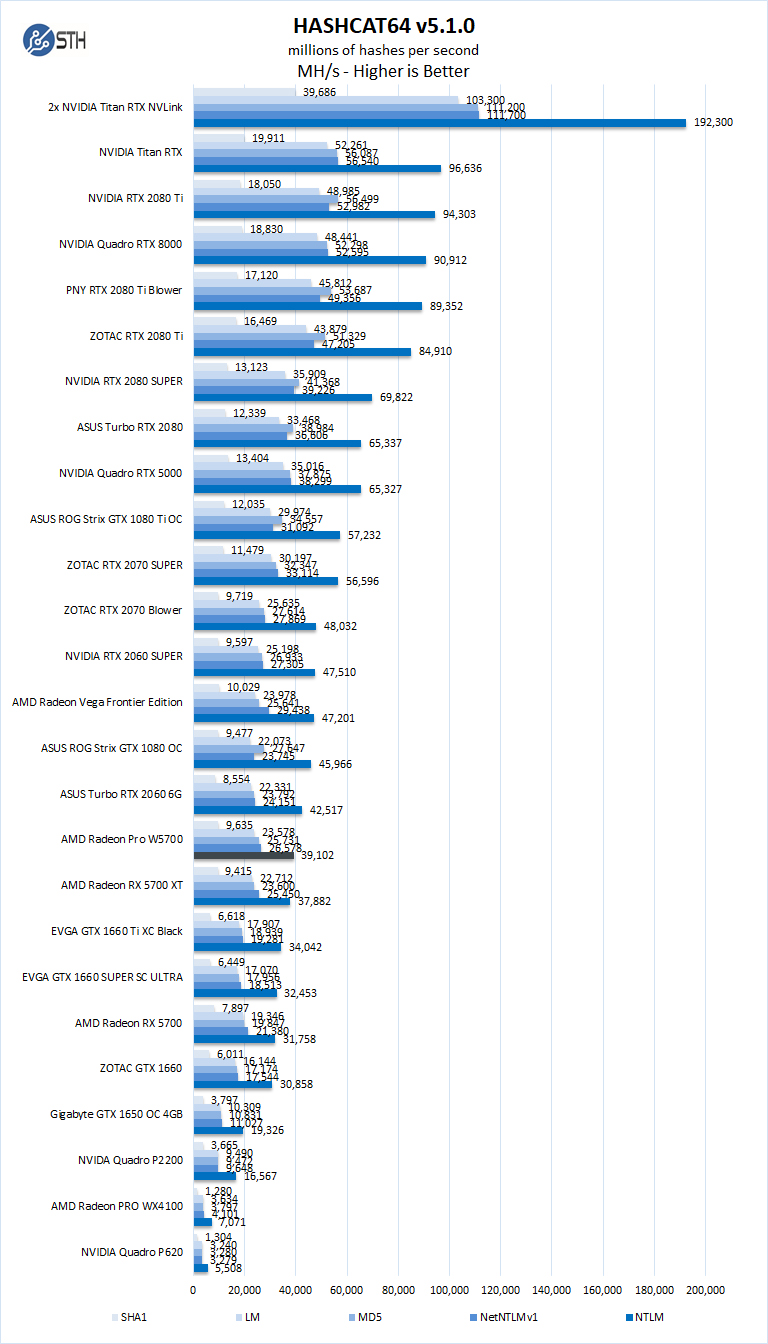
Hashcat can out a heavy load on GPUs, and here we see the dual-fan graphics cards have the edge in our results.
SPECviewperf 13
SPECviewperf 13 measures the 3D graphics performance of systems running under the OpenGL and Direct X application programming interfaces.
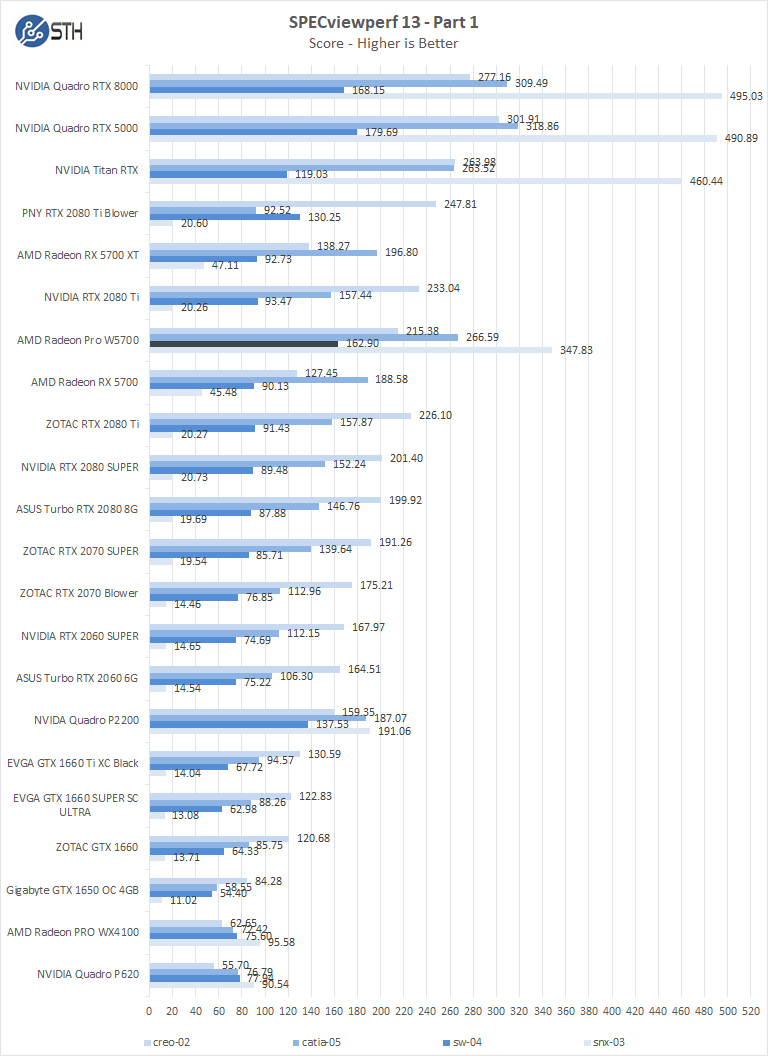
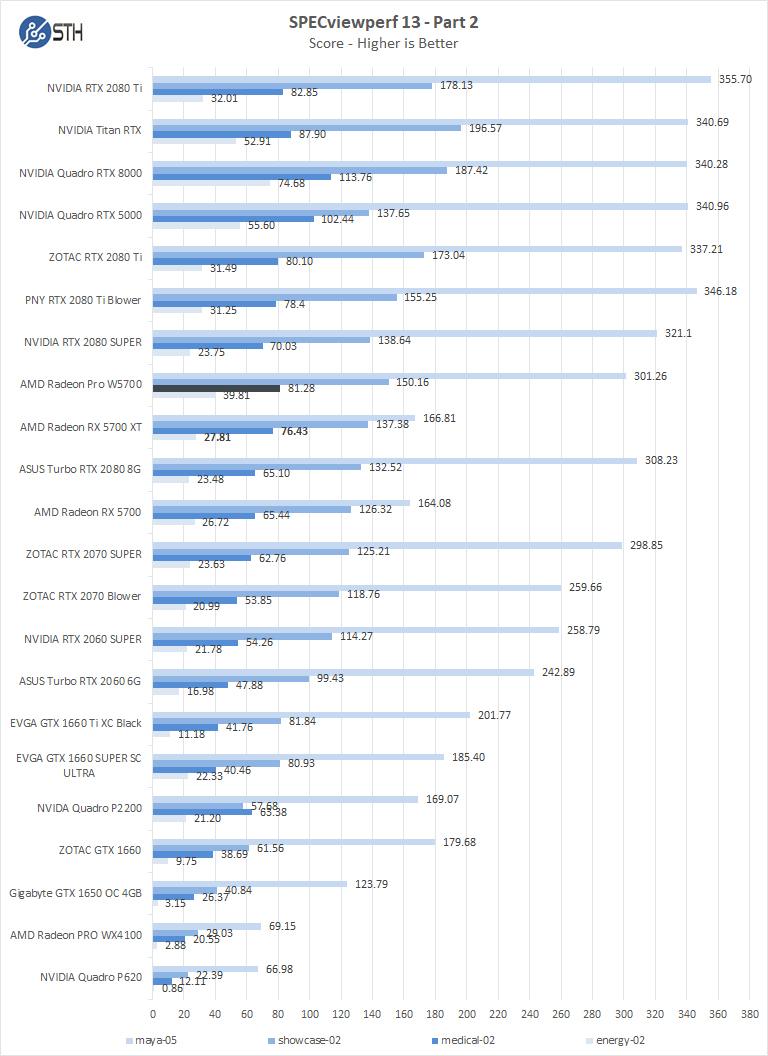
In SPECviewperf workloads, the Radeon Pro W5700 performs very well and can reach RTX 2080 levels of performance. In several areas of the benchmark, it can surpass the RTX 2080. There is still a sizable gap between this and the more expensive Quadro RTX 5000 in our results.
Let us move on and start our new tests with rendering-related benchmarks.




“AMD intends for the Pro W5700 to compete somewhere between the NVIDIA Quadro RTX 4000 and Quadro RTX 5000.”
Where are the results of the Quadro RTX 4000?, did I overlook them?
Misha – feel free to provide one and we can test it. Product positioning is what it is.
Does this card have so-called Navi reset bug? If you passthrough it to VM in hypervisor you won’t be able to reuse card after VM restarts. It was the case with 5500XT (Navi as well). While it’s ok with consumer card it’s big miss with workstation card IMHO. Previous cards (WX2100) work with pass-through perfectly fine.
If the Arion benchmark requires CUDA for GPU, and CUDA is not available on the W5700,
then how was the Arion benchmark run on the W5700 ?
Maybe the Arion benchmark run measured Threadripper 3960x performance, not W5700 performance?